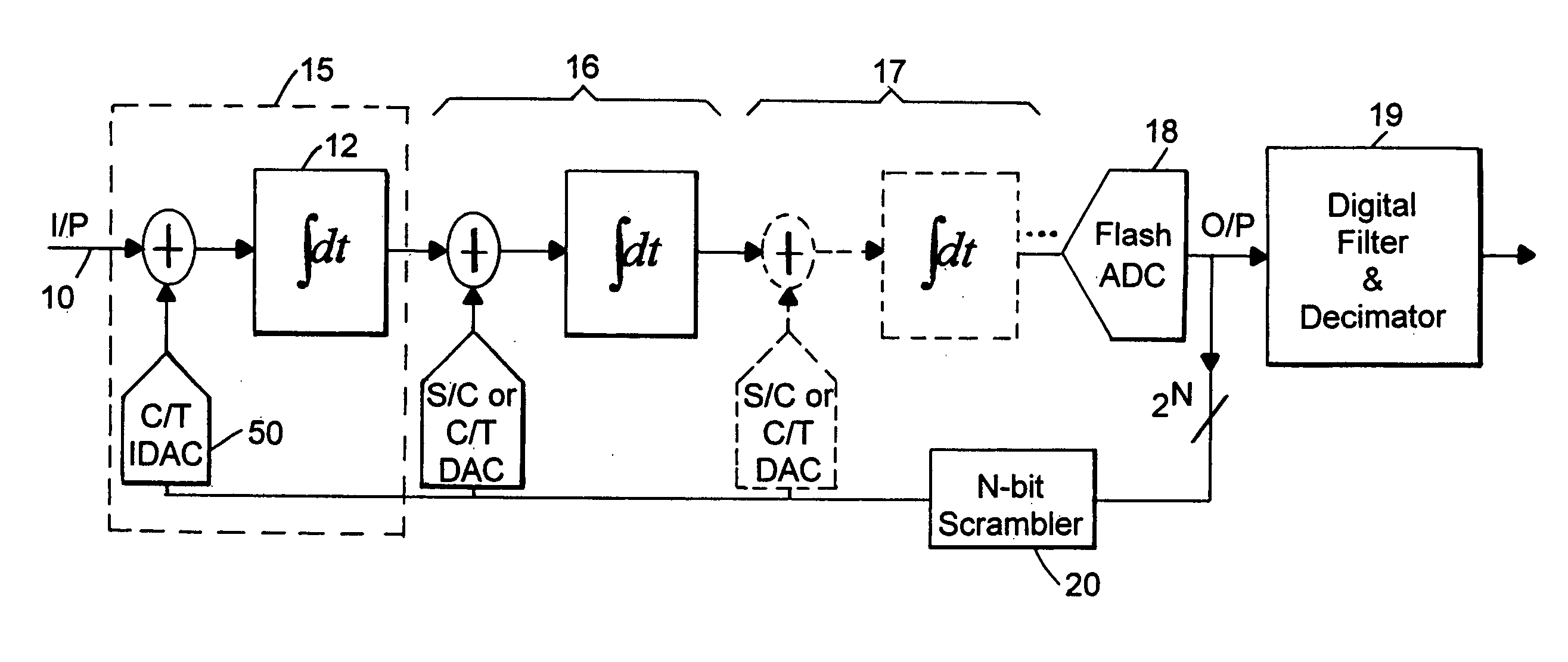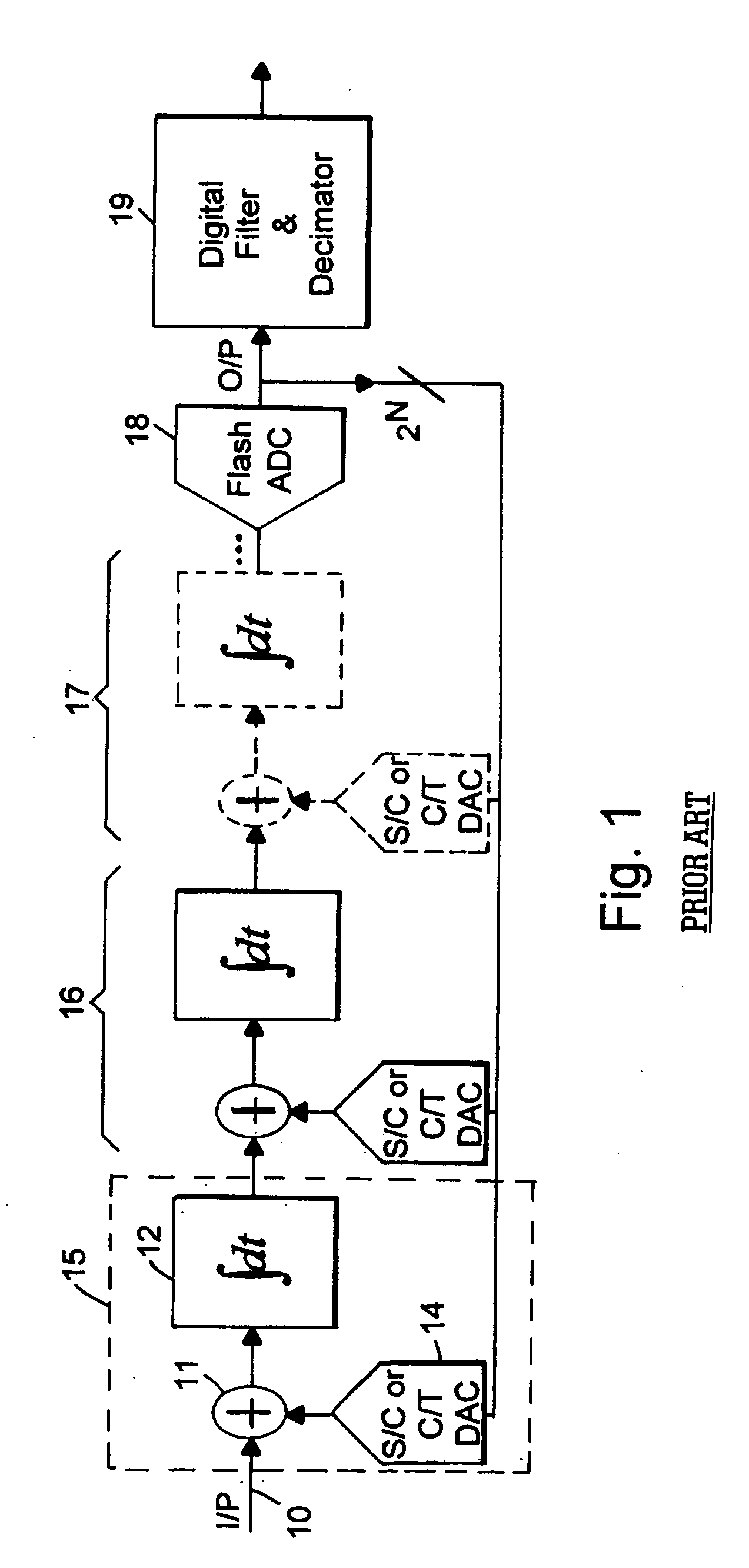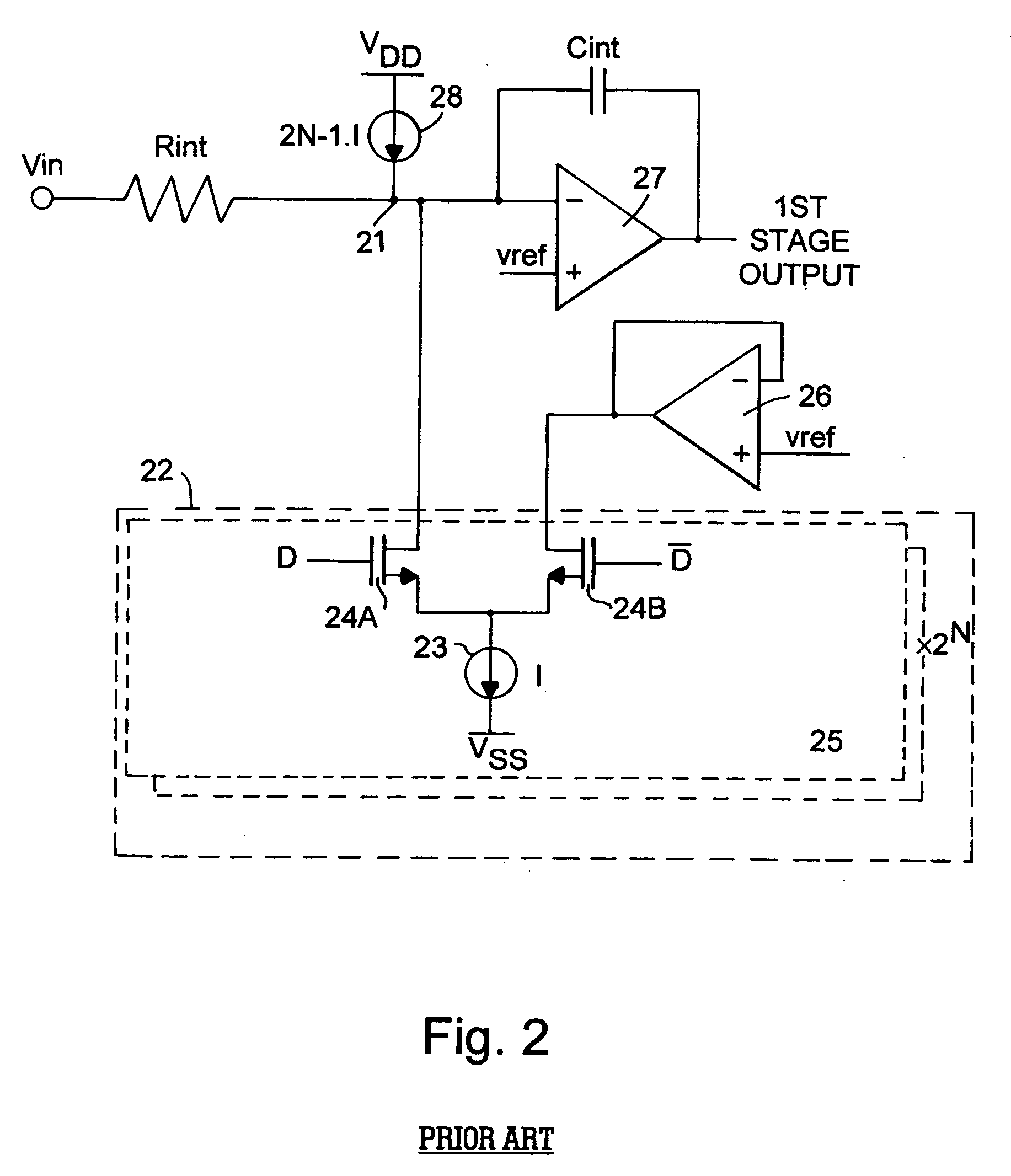Feedback DAC chopper stabilization in a CT single ended multi-bit sigma delta ADC
- Summary
- Abstract
- Description
- Claims
- Application Information
AI Technical Summary
Benefits of technology
Problems solved by technology
Method used
Image
Examples
first embodiment
[0039] A front-end of an ADC according to the invention is shown in FIG. 4. This corresponds to stage 15 of FIG. 3. The front-end has a single-ended input Vin and a single-ended output 80. Typically, an input signal will connect to Vin via a dc decoupling capacitor (not shown). The front-end comprises two DC biasing current sources 31, 32 which each supply a bias current of value 2N-2.I, where N is the number of bits used for the multi-bit feedback signal. A first biasing current source 31 is connected between a supply rail VDD and a summing node 41 via chopping switches 35. A second biasing current source 32 is connected between the supply rail VDD and a node 42 via chopping switches 35. A multi-bit current digital-to-analog converter (IDAC) 50 is connected to the nodes 41, 42. The IDAC comprises a set of 2N unit IDACs, one of which is shown as 55 in FIG. 4. The IDAC 50 receives a multi-bit (i.e. N-bit) digital feedback signal which is used to select a number of the unit value IDAC...
second embodiment
[0047] A front-end according to the invention is shown in FIG. 6. In this embodiment the biasing current sources 31, 32 and chopping switches 35 of FIG. 4 are removed. The other components are the same as shown in FIG. 4 and similar numbering is used. The inclusion of the amplifier 60 and resistor 64, which together form a current-to-voltage converter, along with the extra resistor 65 ensures that the IDAC produces a net zero current flowing into the summing junction 41 during mid-scale range. By removing the DC biasing current source, there is a benefit of an improved noise performance as the DC biasing current sources no longer contribute noise.
[0048] To illustrate operation of this arrangement, assume a mid-range (no input signal) condition where a 16 bit thermometer coded signal from the scrambler comprises 8 bits set high and 8 bits set low. This signal is applied to the 16 IDACs 50. This will set eight of the IDACs 50 to have D enabled high. This causes current sources 53 of t...
PUM
 Login to View More
Login to View More Abstract
Description
Claims
Application Information
 Login to View More
Login to View More - R&D
- Intellectual Property
- Life Sciences
- Materials
- Tech Scout
- Unparalleled Data Quality
- Higher Quality Content
- 60% Fewer Hallucinations
Browse by: Latest US Patents, China's latest patents, Technical Efficacy Thesaurus, Application Domain, Technology Topic, Popular Technical Reports.
© 2025 PatSnap. All rights reserved.Legal|Privacy policy|Modern Slavery Act Transparency Statement|Sitemap|About US| Contact US: help@patsnap.com



